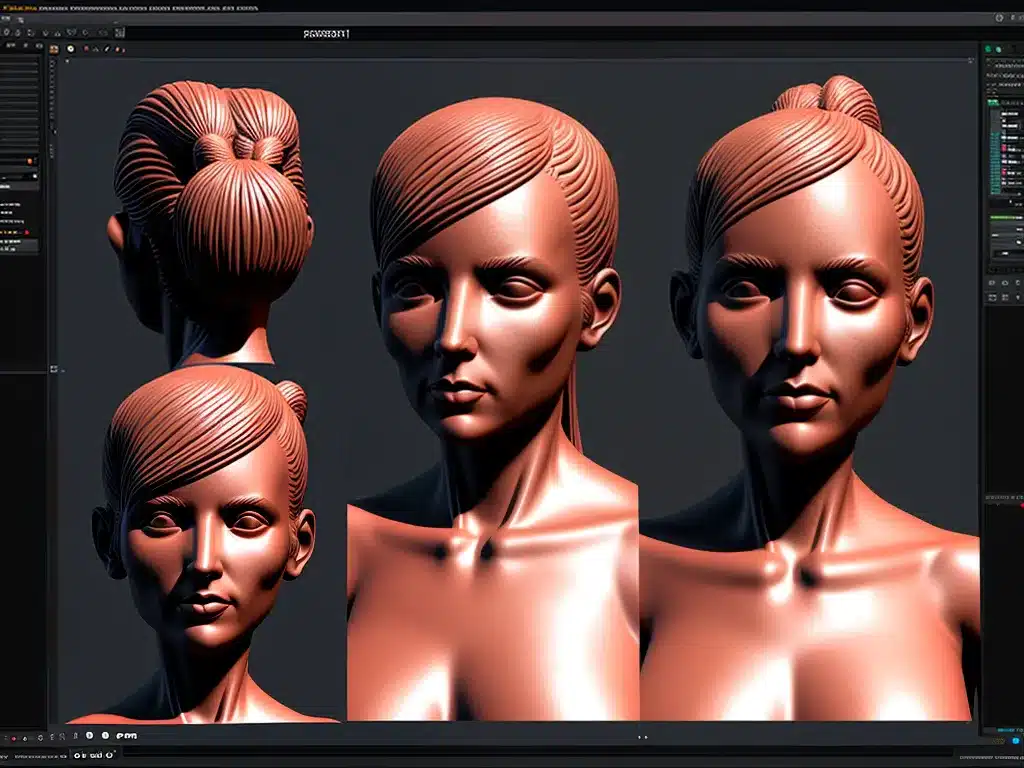Introduction
ZBrush 2024 is the latest version of Pixologic’s acclaimed digital sculpting software. As a longtime ZBrush user, I was eager to get my hands on the new features and enhancements in this release. In this review, I’ll provide an in-depth look at the changes and additions in ZBrush 2024, focusing on the new tools that can enhance workflows for digital sculptors.
New Dynamesh System
One of the biggest improvements in ZBrush 2024 is an overhaul of the Dynamesh system. For those unfamiliar, Dynamesh is a sculpting workflow that allows you to dynamically add or remove resolution as you work.
In previous versions, Dynamesh had some limitations in terms of texture and detail preservation. The new 2024 Dynamesh uses an entirely new algorithm, delivering higher resolution sculpts with better retention of sculpted details.
Some key enhancements include:
- Better preservation of fine details and surface textures when increasing or decreasing resolution. Older Dynamesh versions often lost sculpted details.
- More accurate geometry flow resulting in cleaner models.
- Support for up to 8k resolution for more detailed sculpts.
- Faster processing for resolution changes.
The ability to sculpt freely at different resolutions with less detail loss is a game changer. I’m spending less time repairing and re-sculpting lost details.
ZRemesher Updates
ZRemesher, ZBrush’s automatic retopology tool, has also gotten some significant updates in 2024. It now provides:
- Cleaner topology with fewer irregular triangles.
- Better surface preservation, with reduced shrinkwrap artifacts.
- Enhanced edge flow for hard surface models.
- Support for retopologizing multiple subtools simultaneously.
These enhancements give me more flexibility when re-topologizing sculpts for animation or 3D printing purposes. The surface preservation is markedly better, resulting in cleaner sculpts.
Nanomesh Improvements
Nanomesh is ZBrush’s system for generating high resolution displacement maps. The 2024 updates provide more accurate normal and depth map generation.
Key improvements:
- Higher quality displacement maps with reduced artifacts.
- Support for 8k maps for ultra-detailed sculpts.
- Updated node positioning for better caustic rendering results.
- Faster calculation for all map types.
The quality boost for displacement maps is immediately obvious when previewing models in Keyshot or Marmoset Toolbag. Accurate detailing at up to 8k resolution takes surface detail to the next level.
New Deformation Tools
ZBrush 2024 introduces several new deformation tools that provide more sculpting flexibility:
- Panel Loops – Generates loops along hard surfaces for smoother edge flow.
- Offset Mesh Border – Controls border edges independently from the mesh interior.
- Smooth By Group – Selectively smooths sub-sections and preserves sharp edges.
- PolyGroup It – Automatically divides meshes into polygroups based on surface curvature.
These new options help accelerate hard surface workflows. Being able to selectively smooth parts of a sculpt is a huge time saver.
User Interface Updates
While not the most exciting update, ZBrush 2024 also brings some nice UI enhancements:
- Support for larger 4k monitors.
- Interface scaling for high DPI displays.
- Custom UI layout profiles for personalized workflows.
- Enhanced color coding for subtools and polygroups.
The UI scaling fixes one of my pet peeves when using ZBrush on a 4k monitor. The larger workspace also improves workflow and ergonomics.
Other Notable Updates
Here are some other noteworthy changes in ZBrush 2024:
- Faster rendering with reduced memory usage.
- Multi-threading support for FillMesh and Flatten operations.
- LazyMouse brush now works with surface displacement.
- Many plugin updates like ZModeler, NanoMesh, and KeyShot bridge.
While not flashy, these “under the hood” improvements result in a snappier, more responsive ZBrush.
Verdict – Valuable Update for Sculptors
ZBrush 2024 delivers substantial enhancements that digitals sculptors will appreciate. The upgrades to core workflows like Dynamesh and ZRemesher are great, improving sculpting flexibility with better detail retention.
The deformation and smoothing additions provide more control over shape and form. And the UI scaling fixes make ZBrush usable on high resolution monitors.
While hardcore ZBrush users will rejoice, beginners may still face a learning curve with the interface and workflows. But for professional digital sculptors, ZBrush 2024 is packed with valuable tools to enhance sculpting productivity. I highly recommend ZBrush artists upgrade and take advantage of the new capabilities.
FAQ
What are the key new features in ZBrush 2024?
The main upgrades are a new Dynamesh system, ZRemesher enhancements, Nanomesh improvements, new deformation tools, and UI scaling for 4k monitors.
Is it worth upgrading to ZBrush 2024?
For digital sculptors, yes – the upgrades like enhanced Dynamesh and ZRemesher will definitely speed up workflows. Beginners may not need to upgrade immediately.
Does ZBrush 2024 work with older ZBrush plugins?
Most plugins have been updated and work with 2024. Some older plugins may not be compatible. Check plugin sites for compatibility info.
Can ZBrush 2024 load ZBrush 2023 files?
Yes, you can open ZBrush 2023 .ZPR files in ZBrush 2024. Sculpts migrate seamlessly.
What are the system requirements for ZBrush 2024?
ZBrush 2024 requires Windows 10 64-bit or MacOS 10.14.6 or later. A dedicated GPU is recommended for optimum performance. 16GB of RAM minimum.













